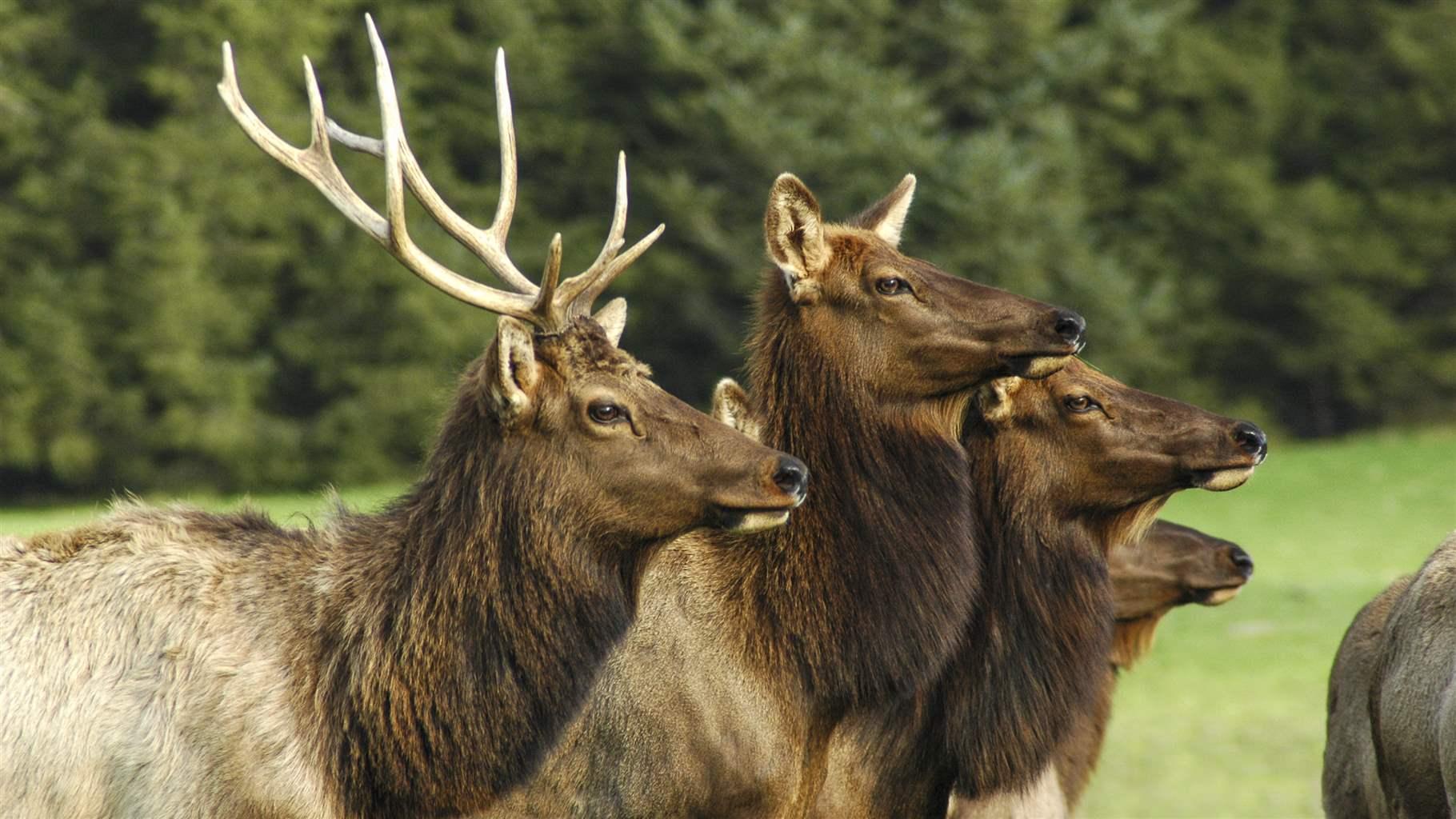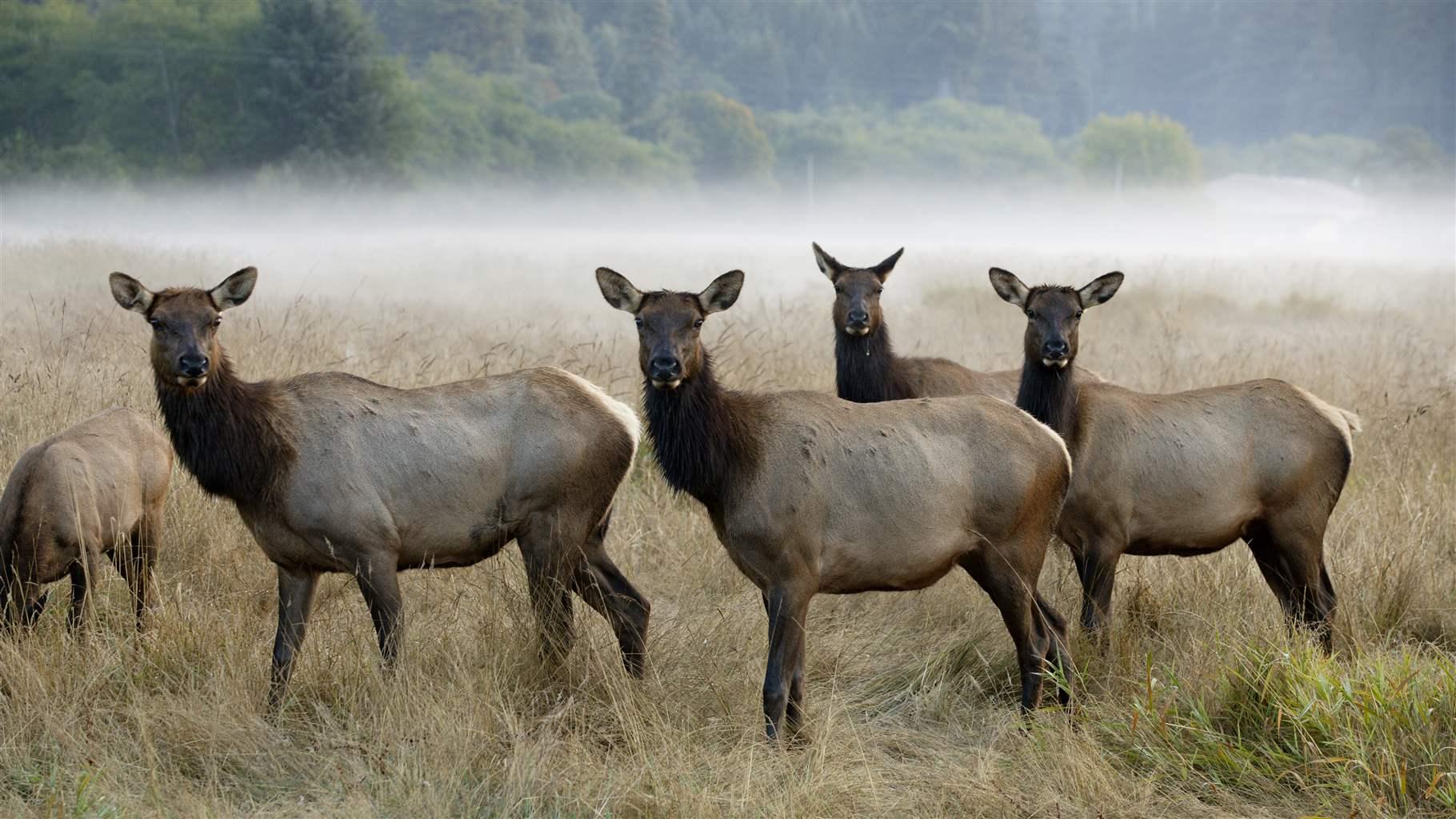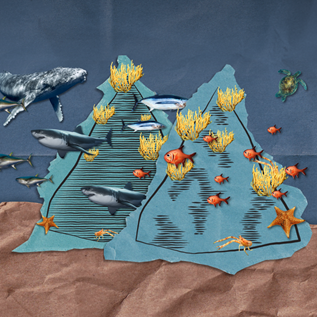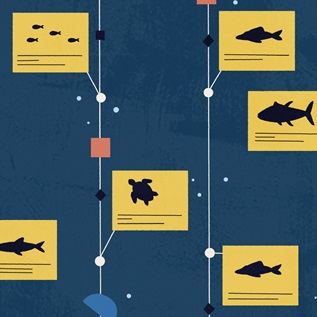California Officials Can Make Roads Safer—for Motorists and Wildlife
Workshop shows how collaboration among agencies and stakeholders helps planning efforts

Northeastern California hosts a rich assemblage of wildlife that migrate seasonally between summer and winter ranges. Deer, elk, and pronghorn have roamed across the region for thousands of years. The area also supports cities, towns, and other communities, including the Pit River Tribe, which comprises 11 autonomous Indigenous bands. A growing network of roads and highways traverses the region, from the Modoc Plateau along the Oregon-Nevada border, west to the Interstate 5 corridor, and south to Mount Lassen. With wildlife and humans sharing this landscape of rugged volcanic tablelands, wild forests, and snow-fed rivers, it’s no surprise that wildlife-vehicle collisions pose a constant danger to motorists and animals and present challenges to wildlife and transportation managers.
To help make travel in the region safer for wildlife and drivers, The Pew Charitable Trusts and the California Department of Fish and Wildlife (CDFW) recently released the Northeastern California Connectivity Report, which stems from a January 2020 workshop held in Redding. That event brought together experts in the latest scientific research and local stakeholders to share information about wildlife movement and barriers within the region. The California Department of Transportation (Caltrans) also played a key role in the workshop.
More than 80 people attended, including Pit River tribal leaders and representatives from conservation organizations, hunting and fishing groups, county governments, and federal land management agencies. During a series of sessions, participants pored over maps, identifying key hunting areas, wildlife gathering places, movement patterns, known barriers, and places where they had seen roadkill.
Participants offered feedback on what criteria should be used to prioritize barriers to migration, such as roads and highways, for mitigation. Measures could include constructing new wildlife underpasses or overpasses or upgrading existing bridges and culverts to allow larger animals to pass through. Possible criteria include scientific data on animal migrations, traditional ecological knowledge that the corridor is being used by wildlife, size of protected areas or wild lands connected by the linkage, number of wildlife-vehicle collisions, and opportunities to piggyback animal crossing or directional fencing construction onto existing or planned transportation and infrastructure projects. After the symposium, the data and information were compiled into a summary report by Science and Collaboration for Connected Wildlands and made publicly available in CDFW’s Document Library. Key recommendations from the report include:
- Participating agencies jointly develop a wildlife and roadways action plan for the region that includes updated maps of known wildlife barriers, major collision areas, and planned maintenance projects, along with a priority list of the most significant barriers. An action plan would also benefit from listing strategies for implementing priority projects, such as funding strategies, public partnerships, and design needs, the report found.
- Caltrans and CDFW work together to craft a standardized protocol to collect roadkill data in order to improve precision and accuracy of prime collision spots. Currently, the agencies do not maintain a data portal for collecting roadkill information, which prevents them from systematically understanding where and to what degree wildlife is impacted by the region’s (and state’s) transportation system.
- Agencies continue to collaborate with the public, stakeholders, and groups such as Pew through regional connectivity working groups. Dialogue and engagement with diverse stakeholders can help the agencies accomplish a variety of important tasks while holding those involved accountable.
- Agencies improve collaboration with Native American tribes through, for example, joint funding proposals and the incorporation of traditional ecological knowledge in connectivity planning and the prioritization of projects. The strong interest and participation of the Pit River Tribe at the symposium indicates a prime opportunity for state and federal agencies to incorporate tribal input into wildlife transportation issues.
Pew is hopeful that the January symposium and resulting report mark the beginning of a commitment by the agencies and regional stakeholders to identify, plan, and implement a variety of safe-passage projects that will benefit wildlife and drivers alike. Caltrans, CDFW, tribes, and other key stakeholders now have many of the necessary ingredients for success on hand, and Pew looks forward to seeing a continuation of the momentum and collaboration inspired by this project.
Matt Skroch is a project director and Laurel Williams is an officer with The Pew Charitable Trusts’ U.S. public lands and rivers conservation team.













